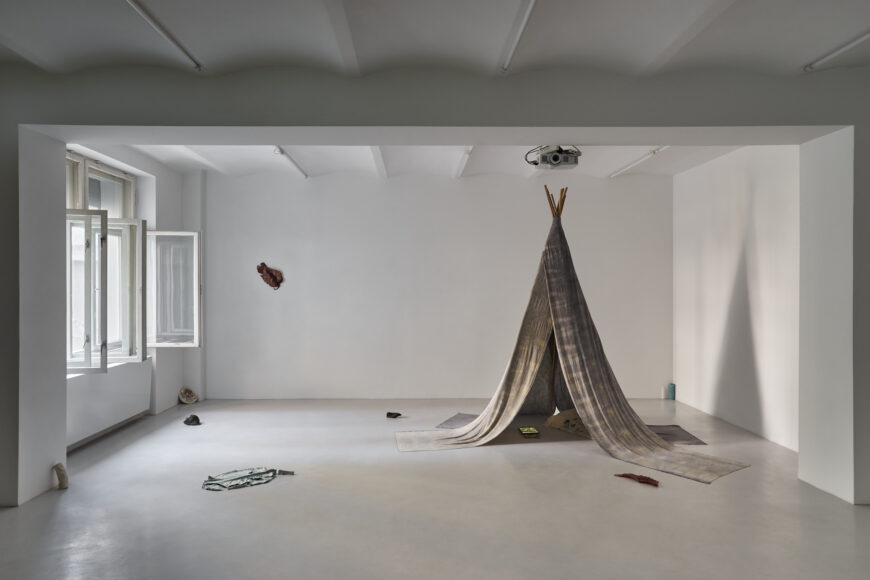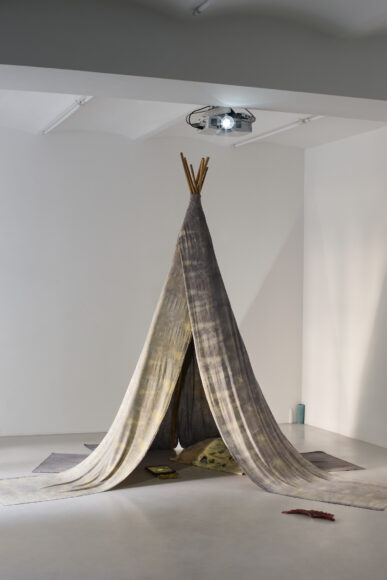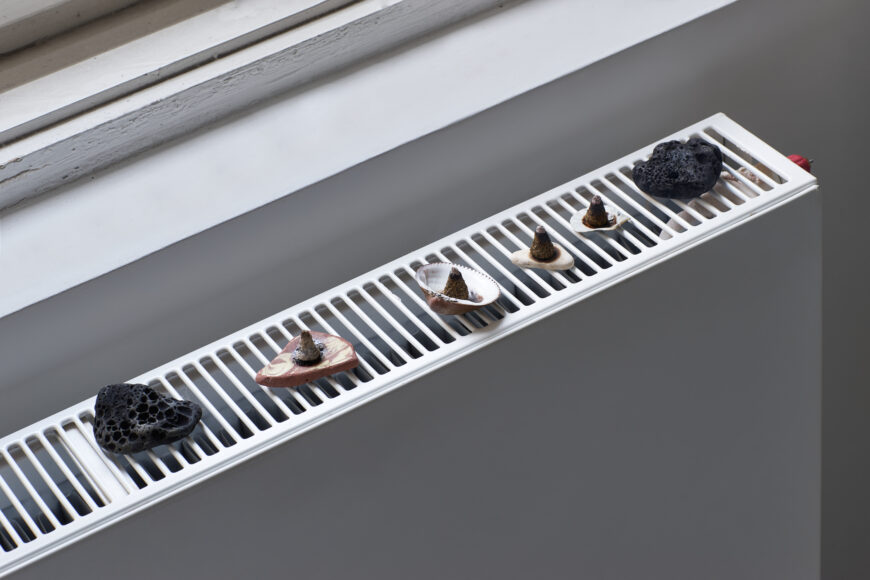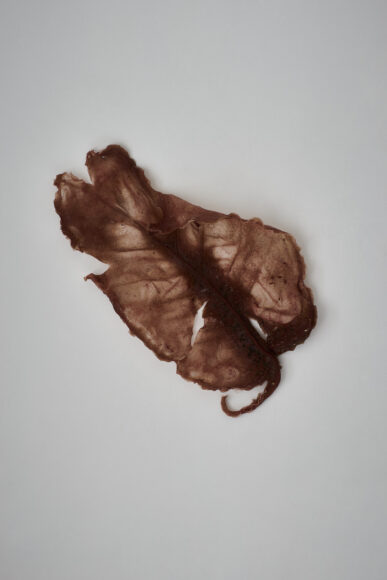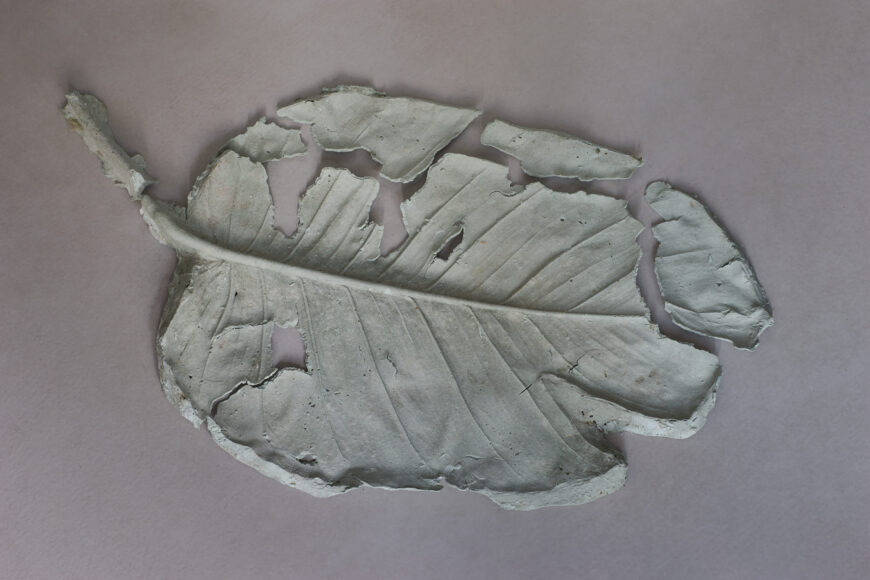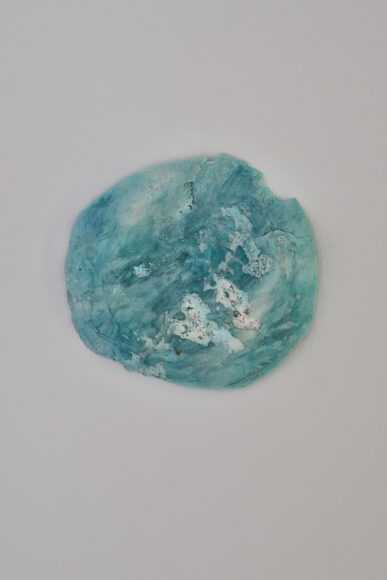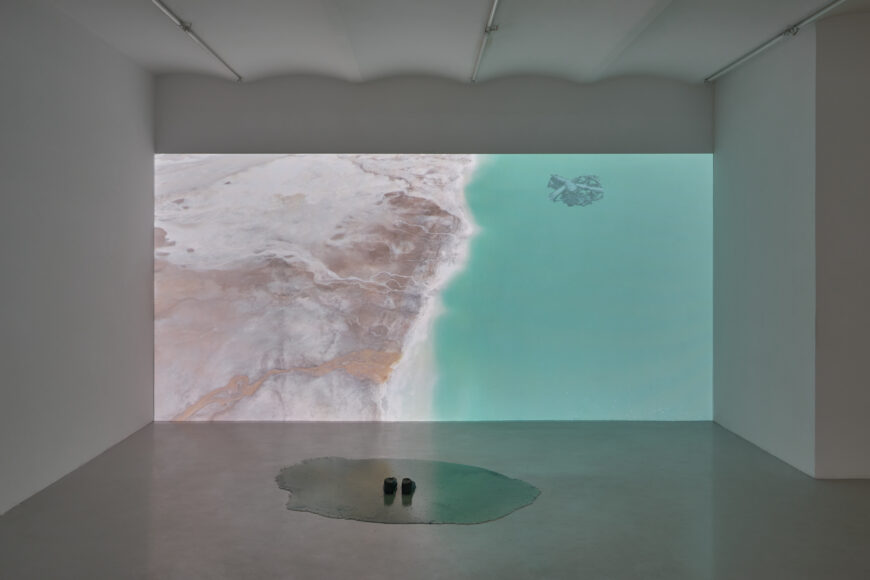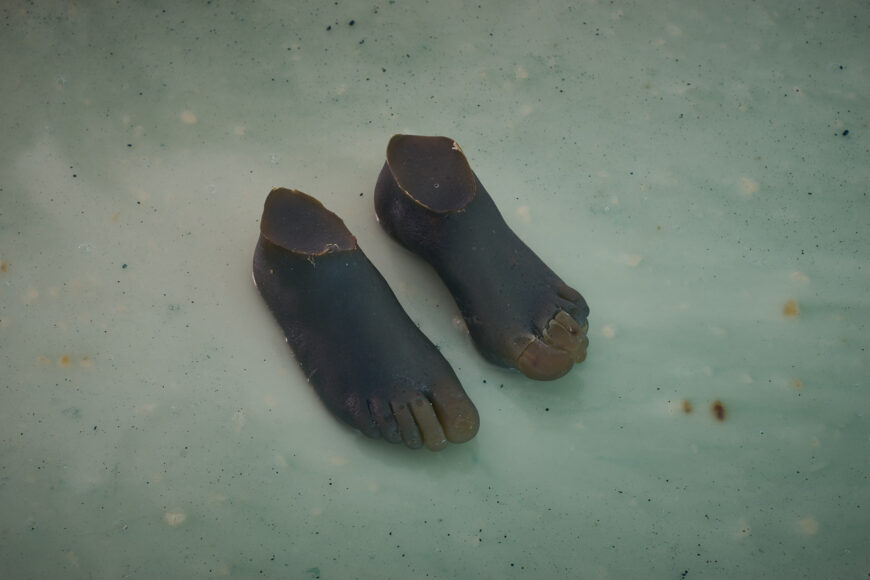Jadwiga SubczyńskaDrifting particles 12—18.6.2020
The exhibition presents a vision of an intelligent substance that multiplies itself, taking control of a post-apocalyptic reality. The biomass spreads in dead reservoirs, the blue depths of water that man has wrought out of life. It often adopts anthropomorphic shapes, rendering human forms ironically. It is intelligent, inter-species matter, the essence of which emerges from the Earth’s core like gel lava.
The objects that go with the video projection create a peculiar ecosystem which, thanks to its sensitive tissue, is constantly changing under the influence of oxygen and light. The plants burning above the dead tank drift into the exhibition space while the smoke distributes the information gathered inside their physical layers. A human can findrefuge in a hut which, illuminated by a screen, reminds us of safety and allows us to palpate and explore the virtual layer of the exhibition. One can look at how the intelligent matter finds its place in the physical world.
Here, water is a metaphor for an empty archive which, although beautiful, has been deprived of a chance to unite fauna and flora. On the screen, we see seductive images of the blue water surface, recorded from a bird’s-eye view. They resemble exotic islands that can be seen without multiplying the carbon footprint of air travel to remote places. These azure reservoirs were built on the site of the former Gosławice lignite pit. This place was intended for the storage of waste from nearby power plants in the late 1970s. The ash and slag began to precipitate chemicals, so the water became highly alkaline. As a result, there is the absence of any organisms inhabiting the lake and a strict ban on swimming in its waters as it may burn the skin. This environment remains sterile due to human industrial activity. Despite this, the paradisal landscape is a frequent destination for Sunday trips of the Wielkopolska residents.
Watching the water from a bird’s-eye view and getting caught up in the hypnotic sequence of turquoise images produces a certain unease. These alarmingly calm waters reveal a lifeless, uninhabited bed. Therefore, digital forms were installed in their depths, which were the result of scanning gelatinous fragments of the human body, additionally encrusted with forest fauna (branches, tree limbs). “Water retains our more anthropomorphic secrets, even when we would rather forget. Our distant and more immediate pasts are returned to us in both trickles and floods.” (Astrida Neimanis, Hydrofeminism: Or, On Becoming a Body of Water, [in:] Undutiful Daughters: Mobilizing Future Concepts, Bodies and Subjectivities in Feminist Thought and Practice, eds. Henriette Gunkel, Chrysanthi Nigianni and Fanny Söderbäck, Palgrave Macmillan, New York 2012).
In the universe of this exhibition, the elementary particles that define the form of material reality are, therefore, considered both as integral elements of the biological code and as digital molecules recycled by technologically advanced meta-perception instruments: lenses, matrices, and algorithms that extend the human cognitive mechanisms. The echoes of the shattered images return in the form of a newly merging tissue, distributed in the physical and virtual space, defining the sum of the experience of a world that may have already gone past its end. Presumably, in all the overrepresentation that exists today, the line between reality and its end has simply become unnoticeable, and what may be a reaffirmation of our existence is merely going outside––towards natural light.
Translation: Katarzyna Szuster-Tardi
Jadwiga Subczyńska (born in 1995)––a graduate of the Photography Department at the University of Arts in Poznań. In her works, she uses a wide range of media, including castings of plant gelatin, 3D holographic installations, art books, and AR videos. The topics she deals with oscillate around the Anthropocene epoch and its new materiality, an extraterrestrial vision of the world, and a return to the roots. In her work, she combines the mystical perception of reality with scientific fantasy and technology. In 2018, she was awarded the ON Award––the main prize of the OFF FESTIVAL of contemporary photography in Bratislava. In the academic year 2016/2017, she studied at the Marmara University in Istanbul.
